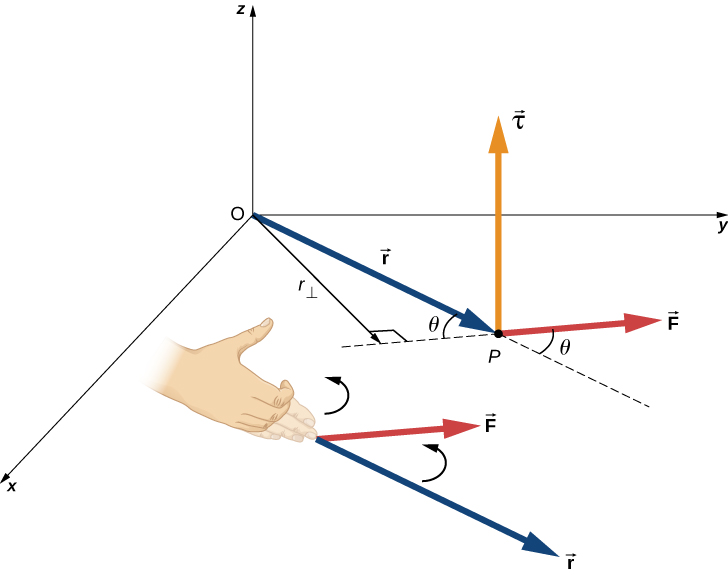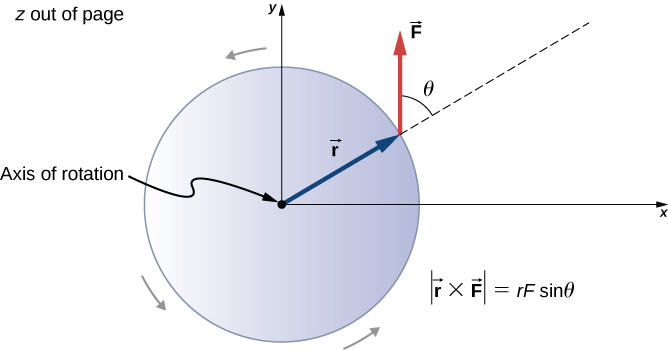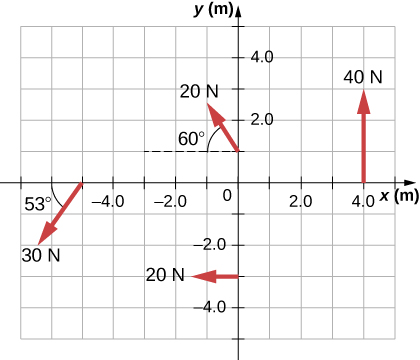| << Chapter < Page | Chapter >> Page > |
Now let’s consider how to define torques in the general three-dimensional case.
When a force is applied to a point P whose position is relative to O ( [link] ), the torque around O is

From the definition of the cross product, the torque is perpendicular to the plane containing and has magnitude
where is the angle between the vectors and . The SI unit of torque is newtons times meters, usually written as . The quantity is the perpendicular distance from O to the line determined by the vector and is called the lever arm . Note that the greater the lever arm, the greater the magnitude of the torque. In terms of the lever arm, the magnitude of the torque is
The cross product also tells us the sign of the torque. In [link] , the cross product is along the positive z -axis, which by convention is a positive torque. If is along the negative z -axis, this produces a negative torque.
If we consider a disk that is free to rotate about an axis through the center, as shown in [link] , we can see how the angle between the radius and the force affects the magnitude of the torque. If the angle is zero, the torque is zero; if the angle is , the torque is maximum. The torque in [link] is positive because the direction of the torque by the right-hand rule is out of the page along the positive z -axis. The disk rotates counterclockwise due to the torque, in the same direction as a positive angular acceleration.

Any number of torques can be calculated about a given axis. The individual torques add to produce a net torque about the axis. When the appropriate sign (positive or negative) is assigned to the magnitudes of individual torques about a specified axis, the net torque about the axis is the sum of the individual torques:
In the following examples, we calculate the torque both abstractly and as applied to a rigid body.
We first introduce a problem-solving strategy.

The torque from force 40 N in the first quadrant is given by .
The cross product of and is out of the page, positive.
The torque from force 20 N in the third quadrant is given by .
The cross product of and is into the page, so it is negative.
The torque from force 30 N in the third quadrant is given by .
The cross product of and is out of the page, positive.
The torque from force 20 N in the second quadrant is given by .
The cross product of and is out of the page.
The net torque is therefore

Notification Switch
Would you like to follow the 'University physics volume 1' conversation and receive update notifications?